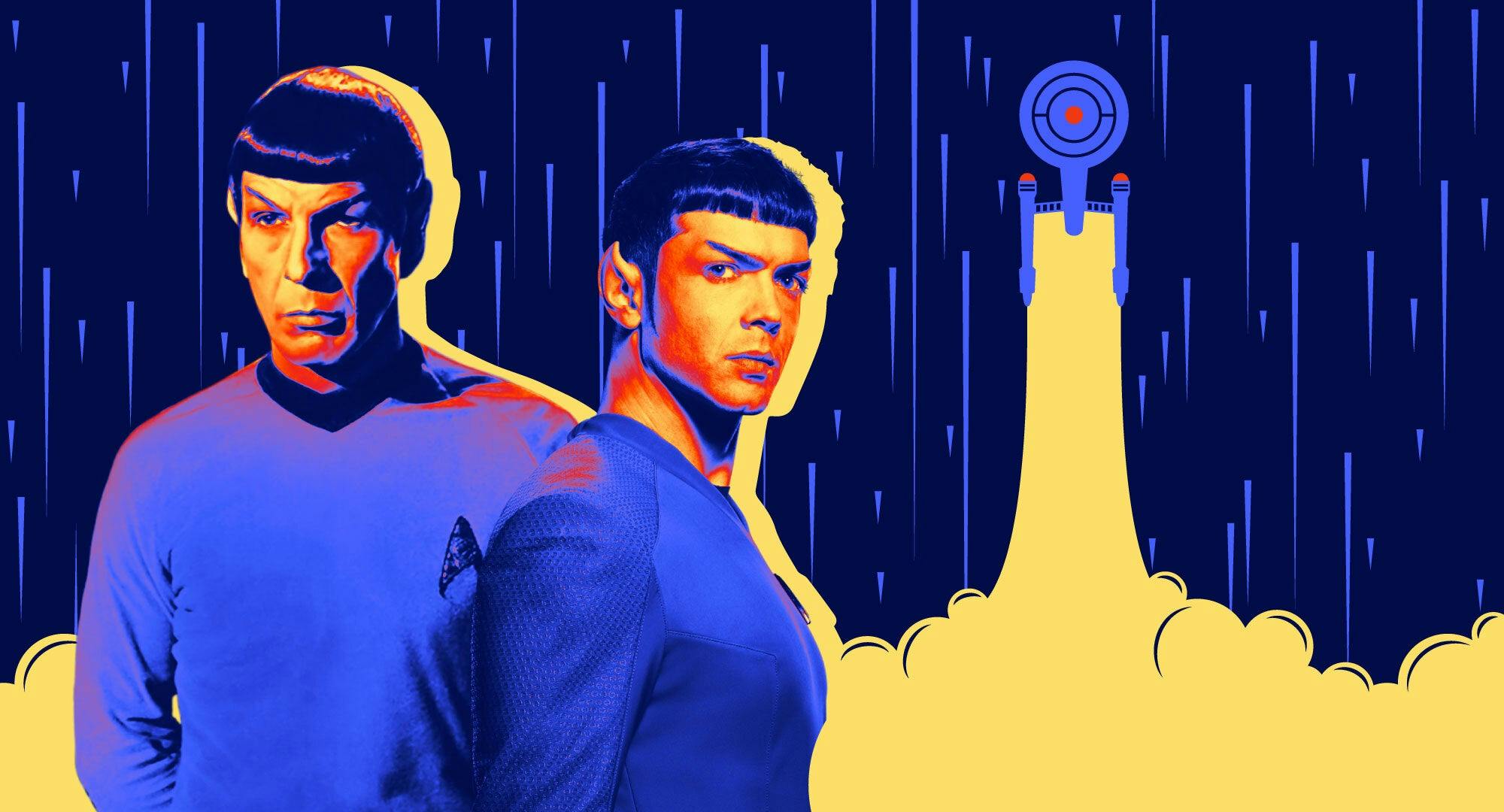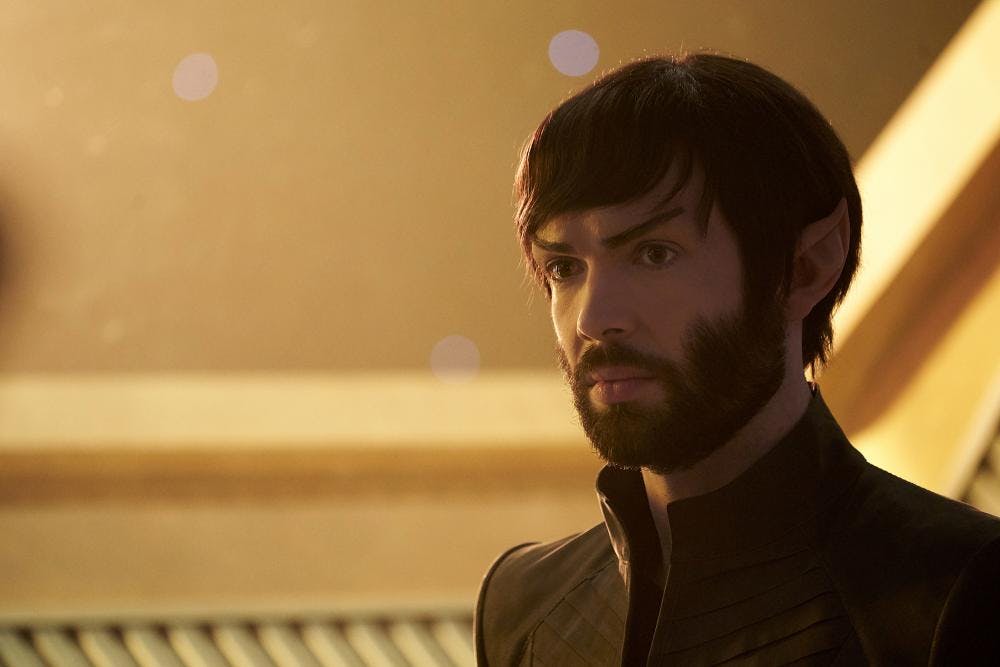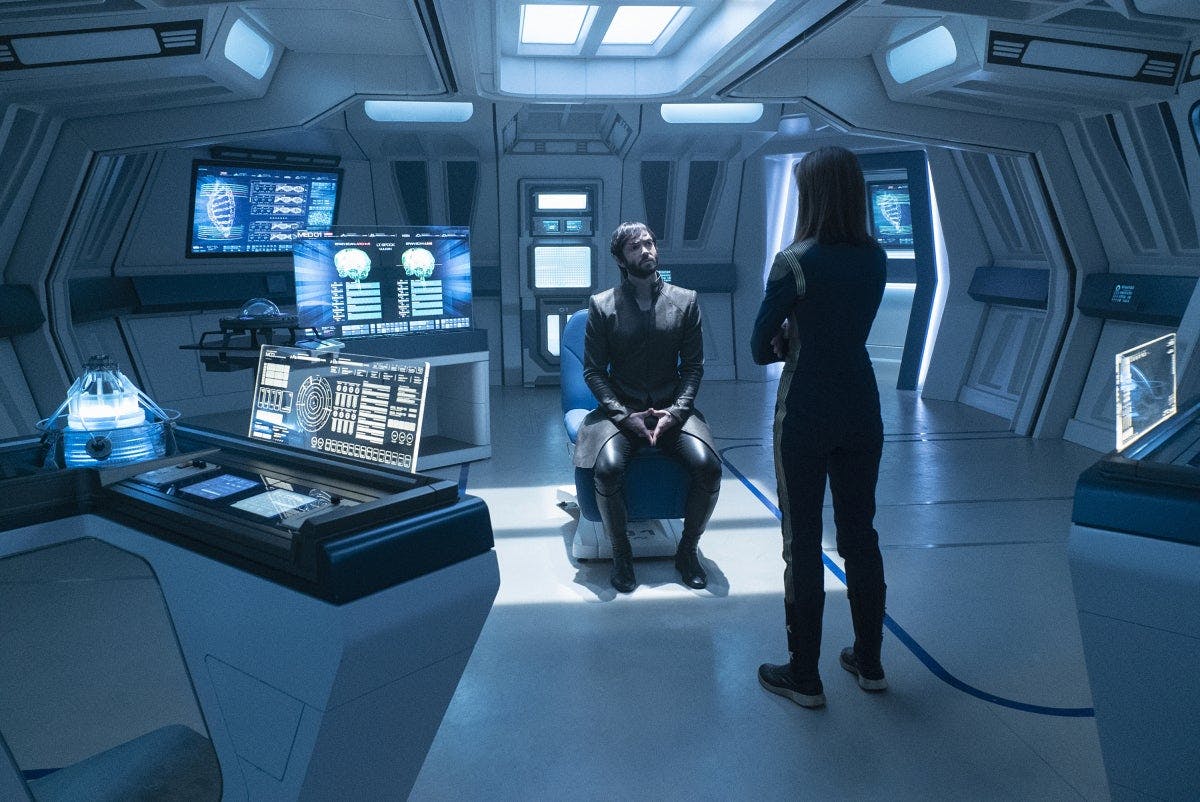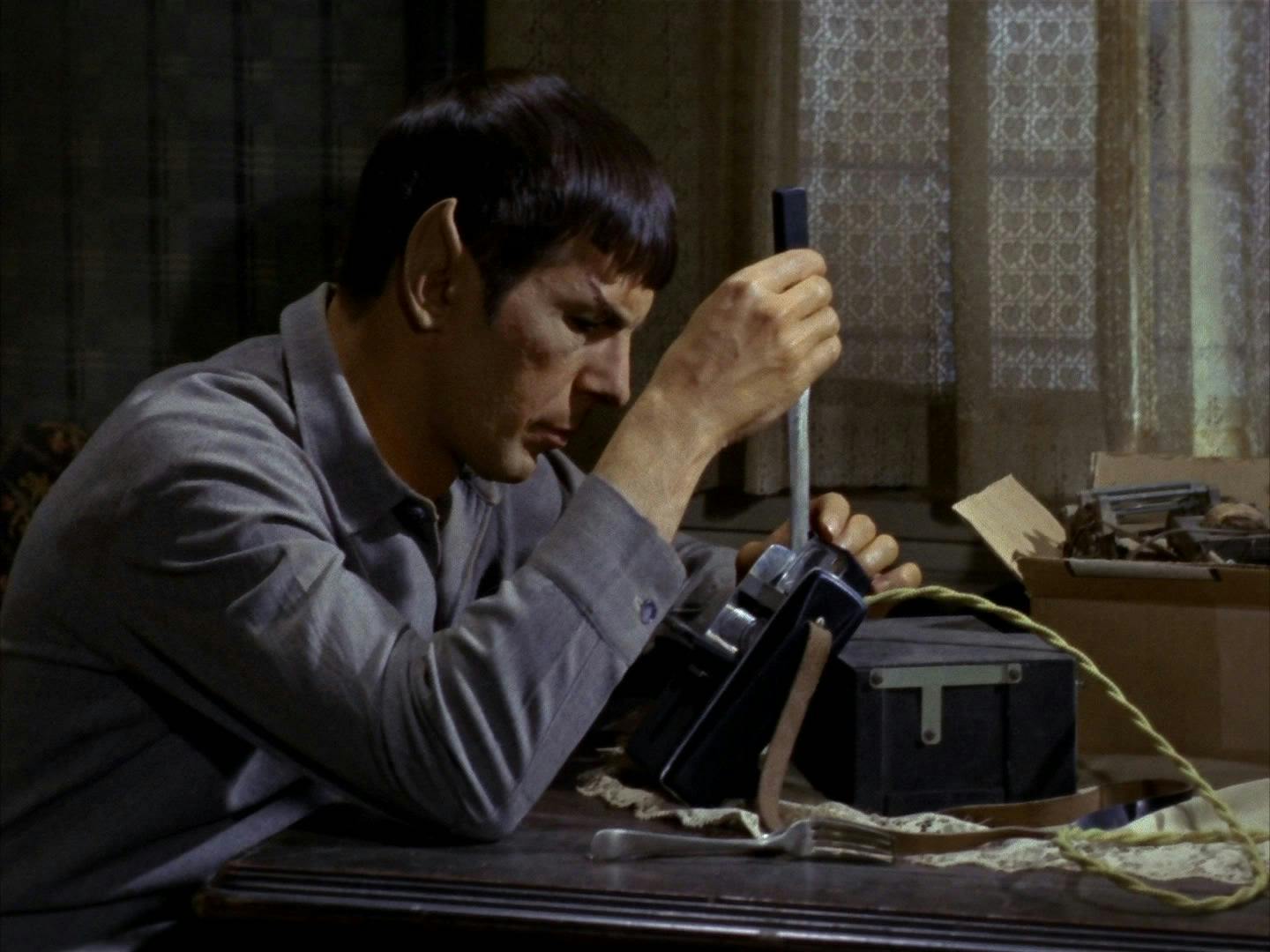Published Apr 6, 2023
Spock's Future is Clear: How Spock Learned the Rules of Time Travel
Episodes like 'The City on the Edge of Forever' show us that the younger Vulcan's path on Discovery has always had a purpose.

StarTrek.com / Rob DeHart
In the Star Trek: The Original Series episode “City on the Edge of Forever,” Dr. McCoy steps through the "Guardian of Forever," and the Federation ceases to exist. Captain Kirk and Spock follow McCoy through the Guardian’s time portal, chasing him to New York City circa 1930 in a desperate attempt to fix whatever he changed in time.

StarTrek.com
On Star Trek: Discovery, then-Lt. Spock has been given a vision of an apocalyptic future, where all sentient life has been eradicated. [I find it incredibly symbolic that he sees Vulcan explode, but gets a chance to prevent it, while neither version of Spock could save Vulcan in the first J.J. Abrams film, Star Trek (2009).] The vision, which guides the second half of Discovery’s second season, is delivered by the Red Angel, the being responsible for seven signals that the U.S.S. Discovery tracks down throughout the galaxy.
Both shows throw Spock into situations where millions of lives are at stake, with no clear or easy answer on how to save these lives — mysteries with the highest possible stakes. In this context, it’s interesting to look at the older Spock from “The City on the Edge of Forever” as someone who has learned from his experiences on Discovery.

Michael Gibson/CBS ©2018 CBS Interactive, Inc.
After all, the Spock (Ethan Peck) in Discovery is a Spock in the process of becoming our Spock, crafted first by Leonard Nimoy. When Admiral Cornwell administers a lie detector test to Spock, there’s some discussion of why a time traveler would give Spock, of all people, the vision of the future. Spock doesn’t know. It’s a startling reminder that the Spock we were introduced to in 1966, who has saved the universe repeatedly, come back from the dead, and become a legend in his own right, hasn’t come to be just yet. He’s a much younger man on the U.S.S. Discovery, struggling with both his sense of self and concerns over mental illness, which the Red Angel’s vision only made worse. What’s a perfectly ordinary, maladjusted, half Vulcan, half human Starfleet officer supposed to do when he’s burdened with the future of all sentient life?
The vital lessons that Spock learns with the Discovery crew now seem like perfectly crafted Easter eggs from the writers' room that inform who he will become. One lesson quickly becomes apparent — information is key. The Discovery crew is constantly at a disadvantage through the season. They meet multiple setbacks due to receiving the right information just too late. It is by staying curious and diligently pursuing the truth that they finally start to gain the upper hand.

StarTrek.com
In “The City on the Edge of Forever,” Spock works night and day to construct a rudimentary computer to help parse tricorder data and determine how the timeline has changed. When Kirk learns that Edith Keeler is involved, and assumes she needs to live, Spock reminds him that they don’t have the whole story. He then works even harder to make sure they have it. Spock knows the cost of not knowing all the facts.
Spock and Kirk eventually learn that if Edith Keeler lives, she will spearhead an American pacifist movement that will indirectly allow the Nazis to develop the atomic bomb and win World War II. As improbable as that is, Spock’s experiences with Discovery must have taught him how seemingly small changes to the timestream can have a massive impact on the future. Gabrielle Burnham’s most effective move against Control is altering the gravity of the Sphere. Michael Burnham sets seven simple signals that lead the Discovery on a critical path. A friendship forged over ice cream is a critical factor in their final battle against Control.
Each small choice can alter the future. But these choices also offer an even more crucial lesson — saving the future is not a win-win scenario. Gabrielle Burnham gives up on saving her husband to save the universe. Pike sacrifices the right to choose his own destiny. Michael and the Discovery crew leave behind everything they’ve ever known in order to get the Sphere data to the future. Each chooses the needs of the many over the needs of the few, and there is no room for compromise in that choice. There is no room for error in changing the future, especially when so many lives are at stake.

StarTrek.com
When Spock says that Edith Keeler must die, Kirk retorts that he’s in love with her. He doesn’t want to see her die. (To be fair, none of us would be happy if we learned that our perfectly nice girlfriend would one day be responsible for Nazis ruling the world.) But Kirk’s previous experiences with time travel have been all fun and shenanigans — using time travel to undo the effects of “The Naked Time,” and running around the 1960s with an Air Force pilot in “Tomorrow Is Yesterday.” Spock has the benefit of experience, which is why he insists; Edith Keeler must die.
You only have to save all sentient life once before the lesson sticks.
This article was originally published on June 6, 2019.
Cindy Massre (she/her) is based out of Florida, where she works with public libraries and nerds out on the regular. Cindy talks about Spock on Twitter @yipp33kiyay.
Star Trek: Discovery Seasons 1-4 are currently streaming exclusively on Paramount+ in the U.S., the U.K., Switzerland, South Korea, Latin America, Germany, France, Italy, Australia, and Austria. Seasons 2 and 3 are also available on the Pluto TV Star Trek channel in Switzerland, Germany, and Austria. In Canada, it airs on Bell Media's CTV Sci-Fi Channel and streams on Crave. Star Trek: Discovery is distributed by Paramount Global Content Distribution.
